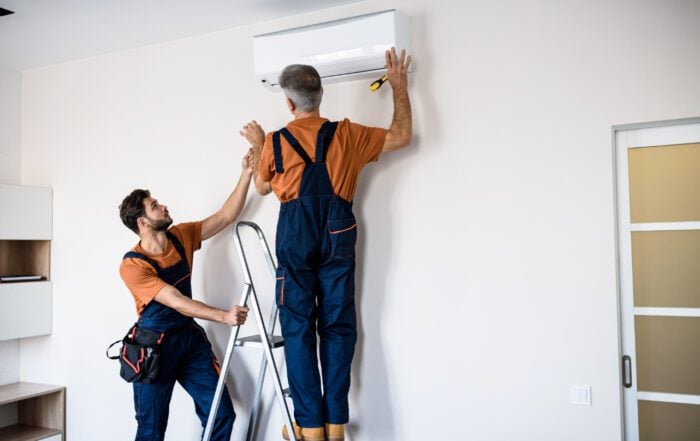High-efficiency furnaces use sidewall vents for “breathing” in outside air for fuel combustion, and “exhaling” cooled exhaust gases nearly depleted of heat. If you’re unfamiliar with the venting and combustion processes of high-efficiency furnaces, take a few moments to learn the components involved to help you maintain a safe and efficient system.
Airflow and drainage issues
Sealed sidewall vents and sealed combustion are signature safety features for high-efficiency furnaces. These components prevent the furnace from backdrafting, which is when depressurization inside a home pulls exhaust fumes back down the flue or chimney.
Because high-efficiency furnaces use sidewall vents, they’re more susceptible to airflow blockages. The area around the sidewall vents should be clear of all airflow blockages for a minimum two feet in all directions. When air intake is blocked or hindered, fuel combustion suffers, and the furnace locks out.
If your sidewall vents have protective screens to prevent bird nests, insects and other obstructions from hindering airflow, remove the screens for the duration of the heating months. The screens actually act as a net for ice and snow accumulation.
Cooled exhaust fumes leaving the secondary heat exchanger still contain latent heat, which continues to cool and condense into an acidic liquid. The exhaust sidewall vent should be sloped a minimum one-quarter inch per foot back towards the furnace. As the vapors condense to liquid, the liquid flows back down the vent to the trap. If the exhaust vent sags or isn’t sloped correctly, liquid accumulates inside the pipe and obstructs exhaust.
The large portion of liquid formed during the condensing process is directed through a tube to a floor drain. The tube should be slightly sloped to the drain to prevent clogging. The tube should not contain any kinks, and make sure nothing is placed on top of the tube.
Since high-efficiency furnaces use sidewall vents, a little extra TLC is needed, but it’s well worth the payback of lower heating bills, optimal home comfort and safer operation.
For more information about high-efficiency furnaces that use sidewall vents, contact Stack Heating & Cooling today. We’ve proudly served homeowners throughout greater Cleveland since 1976.
Our goal is to help educate our customers in Cleveland, Ohio about energy and home comfort issues (specific to HVAC systems). For more information about Sidewall Vents and other HVAC topics, download our free Home Comfort Resource guide.
Image courtesy of Shutterstock
Have Any Questions?
If this is an emergency please call 440-937-9134.
Otherwise, please feel free to call us or submit this form to schedule an appointment for service or request an estimate. We will contact you shortly!



